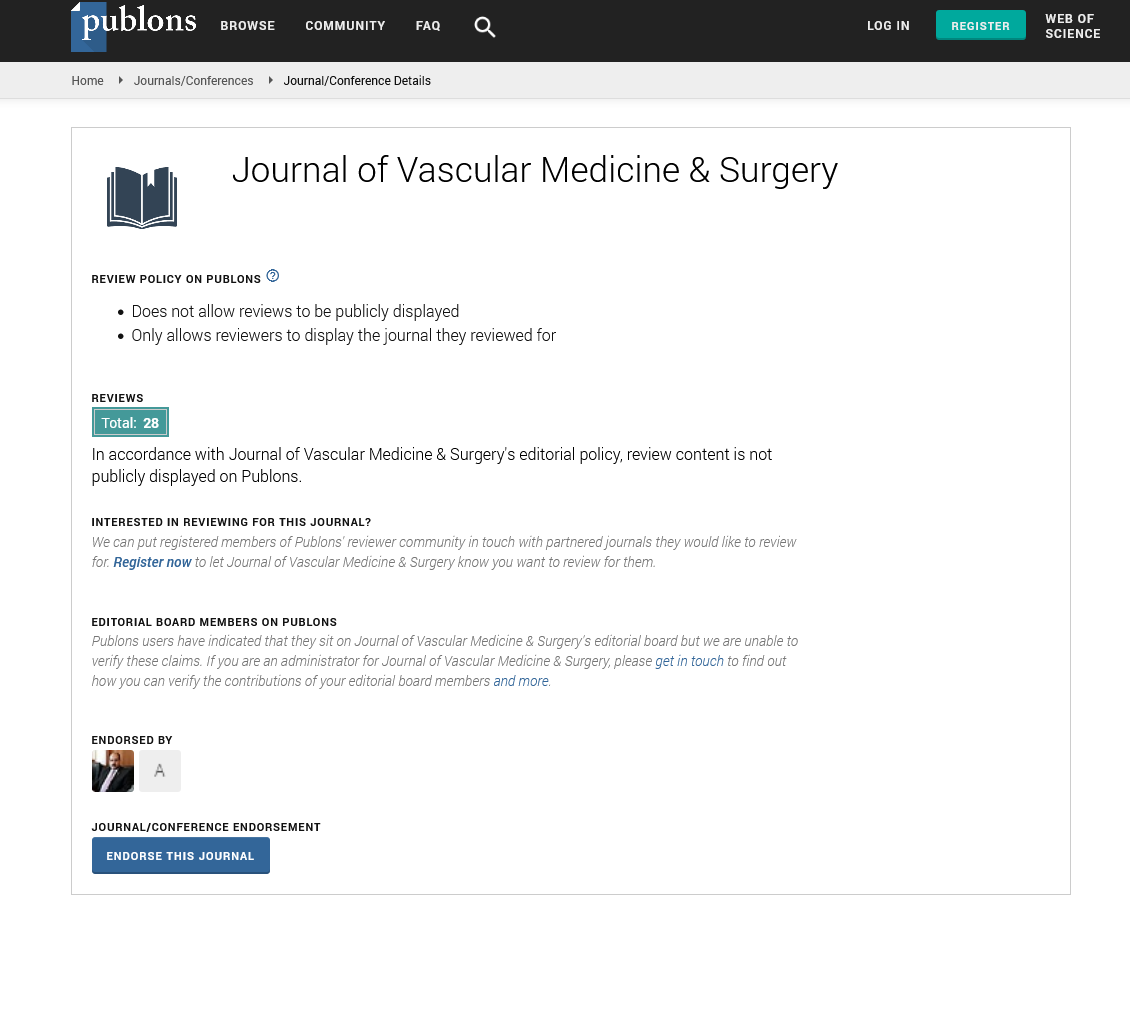Indexed In
- Open J Gate
- Academic Keys
- RefSeek
- Hamdard University
- EBSCO A-Z
- OCLC- WorldCat
- Publons
- Euro Pub
- Google Scholar
- SHERPA ROMEO
Useful Links
Share This Page
Journal Flyer

Open Access Journals
- Agri and Aquaculture
- Biochemistry
- Bioinformatics & Systems Biology
- Business & Management
- Chemistry
- Clinical Sciences
- Engineering
- Food & Nutrition
- General Science
- Genetics & Molecular Biology
- Immunology & Microbiology
- Medical Sciences
- Neuroscience & Psychology
- Nursing & Health Care
- Pharmaceutical Sciences
Ophthalmic artery originated from internal maxillary artery, a potential blindness cause of facial trauma
World Congress on Vascular Diseases, Medicine & Surgeons Summit
October 24-25, 2016 Chicago, USA
Shih-Lun Lo, I-Chang Su, Jian-Jr Lee and Ming-Ting Chen
Cathay General Hospital, Taiwan
Taipei Medical University, Taiwan
Posters & Accepted Abstracts: Vasc Med Surg
Abstract:
Background: Ophthalmic artery (OA) is well known first intracranial branch of internal carotid artery (ICA). The most critical branch of OA is central retinal artery that vascularizes retina and is essential for vision. The injury to the OA may lead to blindness. Aim & Objectives: We present the rare variant pattern of OA originated from the branch of Internal Maxillary Artery (IMAX) without blood supply from the ICA. The plastic surgeons need to be made aware of this variation of OA, which has significant clinical impact for potential blindness. Materials & Methods: We retrospective reviewed the angiographic data of our patients with head and neck lesions who underwent diagnostic angiography or trans-arterial embolization in the hybrid operation room at Cathay General Hospital from March 2015 to May 2016. Results: We evaluated total 103 patients (86 right OAs, 91 left OAs) with special attention to OA origin and its course into the orbit. One high flow vascular malformation case had right side OA arose from the middle meningeal artery (MMA) (main branch of IMX) without any blood supply from ICA. Another case was ICA total occlusion, and the left OA was supply from the branch of IMAX and reconstitute the ICA. Conclusion: OA variant from the branch of IMAX can lead to visual loss in case of accidental or surgical traumatism. Considering the MMA is anatomically located at medial to mandibular condyle, a potential blindness may occur in damage to the MMA cause of facial trauma.
Biography :
Shih-Lun Lo is a resident of Division of Plastic and Reconstructive Surgery in Cathay General Hospital, Taipei, Taiwan.
Email: kenny6088@hotmail.com

